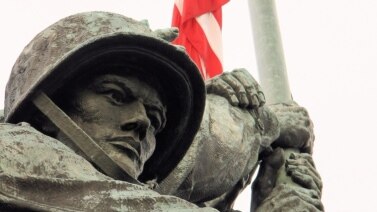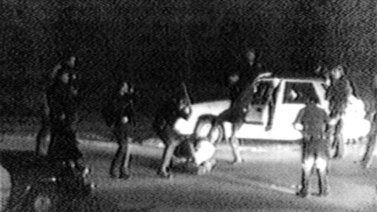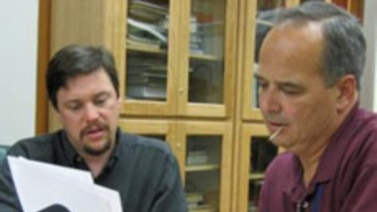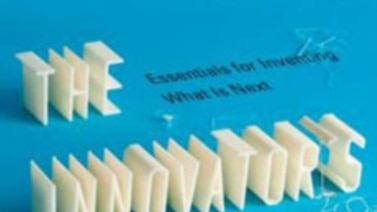
From VOA Learning English, welcome to THIS IS AMERICA. I’m Kelly Jean Kelly.
And I’m Bob Doughty. It is here at last: the Washington D.C. spring, when America’s capital bursts into color. We can ride a bus, a bicycle, a Segway, a horse-drawn carriage, a taxi or a pedicab around the historic city. But to see some of the most important places, walking is best. Do not forget to wear your walking shoes.
The first things we notice are the people – crowds and crowds of people. These visitors fill -- and sometimes overflow -- the trains, buses and restaurants. They increase traffic and sometimes block it.
But the District of Columbia -- called D.C. -- is pleased to welcome tourists, especially at this time of year. City officials say more than one million people visit Washington during the two-week period surrounding the Cherry Blossom Festival. Hotels, tour guides and eating places all benefit from the guests.
“Yeah, our business today is okay. Weather is good, work is good. We’re selling hot dogs, you know, like this is something is like national food.”
“This is Nini’s Soft Serve, located right here in DC. We serve soft serve ice cream, the vanilla, the chocolate, and the twist. So far it’s been great, I mean a lot of people from different places, we’ve met a lot of different people. So tourism seems to be booming right now.”
Many in the crowds in the city for the festivities are young people on spring vacations from school. Some come with groups from their schools, wearing similar T-shirts. That lets their teachers and guides count heads, and make sure nobody gets lost.
Younger children are also touring with their parents and grandparents. The first stop for many visitors is the Tidal Basin in West Potomac Park, southwest of the National Mall. The easiest way to get there is on foot after using Washington’s Metro system.
The famous cherry trees bloom around the waters of the basin, which reflect the trees’ images. More cherry trees grow in East Potomac Park and around the Washington Monument.
The National Park Service suggests that cherry blossoms should be seen during three time periods. The first is when the light pink flowers swell their buds as they wait for warmth and sunshine to fully open. The second is the peak time, when the blossoms are fully “out.” At that time the blossoms look like they do on postcards. The third is when the blossoms have fallen, covering the ground with a beautiful snowy blanket.
“Hi my name is Danielle, I’m from New York, and I’m on my way to the Cherry Blossom festival. I’m expecting that it will be beautiful, because I’ve seen them in person in Japan, so it’ll be interesting to see them here.”
At the Tidal Basin, visitors from all over the world are moving along the sidewalk and between the graceful trees. Their branches appear to reach out to the people. Some of the trees were given to the United States by Japan and planted as long ago as 1912. Others developed much more recently.
People seem to be holding an unannounced parade on the sidewalks and around the trees. They move along like a colorful human chain. Parents and grandparents push babies in strollers. Dogs trot along on the pleasant march. The animals are permitted so long as they are on a leash. Some families bring food and eat picnics under the trees. With official permission, you can have a big picnic – or get married– in nearby East Potomac Park.
“My name is Amelia, I’m from the Maryland Institute College of Art in Baltimore. We’ve having a sushi and like matsuri sort of lunch type thing for the Cherry Blossom Festival, which is another reason why we’re here.”
“Hi my name is Ramir, and I’m with my family and my friends. We’re visiting from New Jersey. We’re eating sandwiches with tomatoes, cucumbers, oranges, watermelon.”
“My first name is Grant, and I’m having pretzels, a sandwich, and some Kool-Aid.”
The waters of the Tidal Basin reflect the Jefferson Memorial, the huge white monument celebrating America’s third president, Thomas Jefferson. His statue stands inside a stone memorial. Some of his most important words line the walls. Among them: “The God who gave us life gave us liberty…”
Some people in the cherry-blossom crowd are going to the Jefferson Memorial to read those words.
There are still more cherry trees at the Washington Monument, not far away. The obelisk – the tall, slender column of marble -- honors the United States’ first president. George Washington also led the Continental Army that won the country’s independence from Britain.
Unfortunately, the inside of the Washington Monument is closed for repairs because of damage from a 5.8-strength earthquake in August 2011. Scaffolds are being built on the outside so the work can be done. But there are other things to do outside the monument.
The breezes near the stone column show great energy. They blow so hard that you can hear them as they toss the American flags that surround the monument. They represent the country’s 50 states and its six territories.
Higher up against the skies are colorful kites.
“Somebody lost one up here.”
Some have colorful designs or pictures of animals. A few seem to be on their way to low hanging clouds. Men, women and even young children raise their cellphones and cameras and take pictures.
After seeing Washington’s memorial, walk to the Lincoln Memorial. Many people consider Abraham Lincoln to have been America’s greatest president. His monument contains a larger-than-life statue of him seated in a chair. The statue is more than five and one half meters high.
Some of his most famous words appear on the monument – the Gettysburg Address and his Second Inaugural Address. Lincoln guided the country through the Civil War. He saved the Union from dividing into two nations – North and South -- and ended slavery.
Major events have taken place around this monument and the long Reflecting Pool. Crowds of people have listened to speeches, demonstrated and protested here. They have also listened to music.
“This concert is presented under the auspices of Howard University, of Washington, DC. Miss Anderson will sing from a stage built on the steps of this impressive memorial to America’s Civil War president, looking out over the beautiful Reflecting Pool to the Washington Monument.”
One of the most memorable musical events took place here in 1938. At that time, the great American contralto Marian Anderson sang to a huge crowd from the Lincoln Memorial steps. She appeared there after being denied permission to perform in the Daughters of the American Revolution Hall because she was African-American.
“I have a dream, that one day this nation will rise up, live out the true meaning of its creed: we hold these truths to be self-evident, that all men are created equal.”
Years later, Martin Luther King Junior gave his famous “I Have a Dream” speech at the Lincoln Memorial in 1963.
“…that one day on the red hills of Georgia the sons of former slaves and the sons of former slave owners will be able to sit down at the table of brotherhood. I have a dream…”
His struggle for civil rights changed the lives of millions of Americans.
Not far away, Martin Luther King is remembered in a memorial whose centerpiece is a nine-meter white statue. It is the latest addition to Washington’s major monuments. It is the only one that honors a non-president. The sculpture is called the “Stone of Hope.” It shows Dr. King seeming to look out into a future that his life and work continue to help build.
There are many more things to see in Washington, D.C. –- in the spring, or at any time. We have visited just a few. But we have walked a long way now, and the time for our visit is over.
Please come back!





